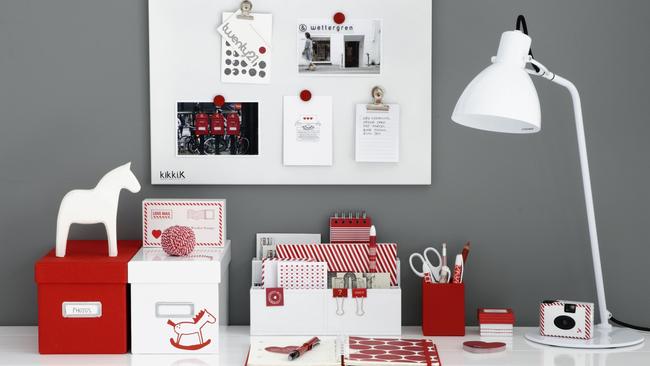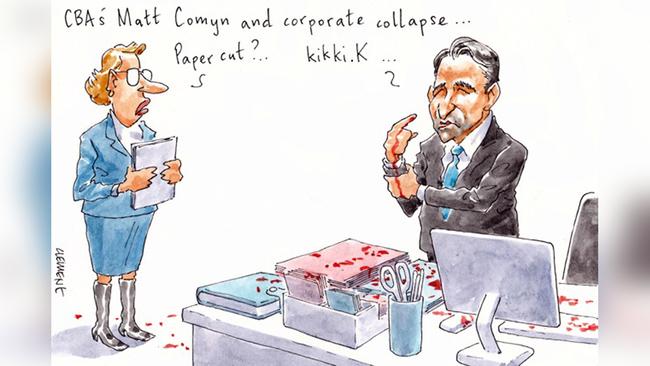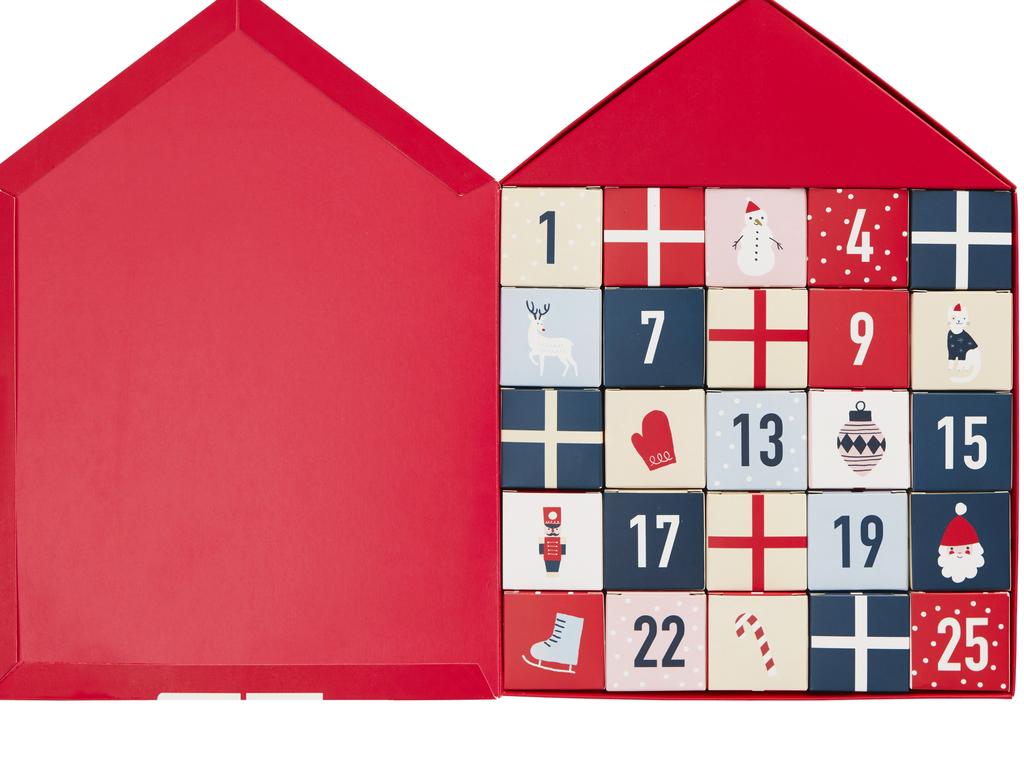Stationery empire looked good on paper

The founders of kikki.K, Kristina Karlsson and Paul Lacy, are understandably devastated by the multi-million-dollar collapse of their international designer stationery empire.
But they’re not the only ones.
Over its 20-year journey, kikki.K has managed to attract some heavy-hitting backers who, like the 40 per cent founding shareholders, look to have done their dough on fancy paper work.
The investment arm of Mark Korda and Mark Mentha’s Korda Mentha has about 15 per cent of the failed retailer, while Boost juice millionaire Janine Allis has also been an investor in Karlsson’s paper dream for several years.
Melbourne’s wealthy Myer family also has capital tied up in kikki.K, as does entrepreneurial adman Ben Lilley.
One of James Packer’s key execs, Sam McKay, is also a shareholder and until only last year was a kikki.K director, having also chaired the group for several years.
McKay, 44, runs all of Packer’s consumer investments and is a director of the Packer Family Foundation.
Also on the register in a meaningful way is former kikki.K boss Iain Nairn, who left the group just a couple of months ago after running the operation for almost four years.
Nairn, who was the former boss of David Jones and Country Road, had embarked on a gangbusters program of international expansion at kikki.K, with Lacy and his fellow directors now admitting that they should have kept a tighter watch on Nairn and his grand plans for the group.
The retailer is believed to be trading at a loss, but revenue is healthy.
Yesterday, Lacy and Karlsson were working in the business but receiving no payment, and were pushing hard for the receiver to engage with a Chinese buyer with whom they had been negotiating a sale.
Margin Call can reveal that that potential financial white knight is stationery giant Shanghai M&G, which is attracted to the kikki.K brand and its design intellectual property.
There is also believed to have been other unsolicited interest in the operations lodged with Cor Cordis this week, despite the fact that a formal sale process is yet to begin.
Banker plays nice
So banker Matt Comyn finds himself at the centre of yet another high-profile corporate collapse.
Like at TV chef George Calombaris’s Made Establishment, Comyn’s Commonwealth Bank is the lender to the also collapsed designer stationery retailer kikki.K.
Margin Call understands CBA was running about a $2m line of credit to founders Kristina Karlsson and Paul Lacy’s operations, but was not the creditor responsible for plunging the 65-store group into receivership on Tuesday after directors earlier in the day first called in administrator Jim Downey from JP Downey & Co.
We hear that in the interests of staff getting paid, CBA has graciously agreed to keep the line of credit open to allow kikki.K to complete this week’s payroll.
So who called in receivers Barry Wight and Bruno Secatore from Cor Cordis?
Only secured creditors can do that via a registered general security deed. Along with CBA kikki.K has three of them, including private equity preference shareholder TDM Growth Partners, which until last Friday was represented on the board by former UBS investment banker Julian Reddick. When Margin Call gave Reddick a bell, he didn’t call back. We note that former Google exec Alejandro Vendramin mysteriously jumped off as a kikki.K director last week too.
Ordinary shareholder Hung Hing Printing Group is also a secured creditor, while a division of Mark Korda and Mark Mentha’s Korda Mentha that’s a kikki.K investor has lent money too. (That, by the way, explains why Korda Mentha didn’t get the wind-up gig.)
Margin Call hears it was a TDM rep who officially signed the paperwork to bring on receivership, but that all three of those investors had loaned money to kikki.K and are owed up to a combined $5m.
Under their loan agreements, appointment of an administrator was a default condition, so the move to receivership was virtually automatic.
The goods news in all that, though, is that Comyn hasn’t pulled the plug so workers are going to get paid.
A four pillar as a corporate good guy? Who’d have thought! After Kenneth Hayne’s royal commission, maybe the worm really has turned.

In the bunker
The artwork out front of 1 Bligh Street by artist James Angus looks scarily like a virus. And the vast office glass lobby was awash with sanitiser. There was a white-gloved cleaner with wipes constantly cleansing the lift call buttons at the commonwealth parliamentary offices in Sydney. By lunchtime the many public health notices on display had been updated to take heed of the Italian travel advisory.
Like every other fear-ridden Australian workplace, the workers were trying to go about their daily tasks. No panic but filled with dread, since just across the lobby of the office tower, staff at top-tier law firm Clayton Utz were sent home last week after their scare.
Nowhere to be seen in the public spaces, Prime Minister Scott Morrison was preparing to hose away the contagion with his stimulus package. Treasurer Josh Frydenberg was at the Sydney offices yesterday after meeting with banking bosses. He was back at the desk from lunch at 1.56pm.
Assistant Treasurer Michael Sukkar was scheduled to have dinner with the Insurance Council of Australia at Rockpool last night. Federal Minister for something or other Stuart Robert looked super casual in his Tommy Hilfinger T-shirt. Peta Credlin was there catching up with Tony Abbott.
The street name Bligh, of course, comes from our fourth governor in 1806, the days of scarlet fever, smallpox and scrofula. Bligh also had to deal with venereal disease from the crews.
The federal government must surely have relocation contingency plans should the virus necessitate it. Maybe even reactivating the old nearby bunker under Hyde Park at St James Station that dates from the 1920s. Proposed train lines were converted into wartime shelters, with General Douglas MacArthur long-rumoured to be the last to use the space.
A bit less glamorous than the free-world’s most famous bunker, Winston Churchill’s cabinet war rooms beneath Whitehall, where he held cabinet meetings and slept between war campaigns.
The government has been in the international award-winning building since 2012, a year after completion of the 5 Star NABERS Energy-rated building.
They took a lease through to 2025, with a 2x5-year options for 4890sq m office space across levels 19 to 21.
Initially they were paying $5.6m a year, but the annual 4 per cent increase likely puts their rent at well over $7m a year.
Should Parliament House, Canberra, succumb to the virus, and with Bligh Street such a busy office block, the worst-case relocation could alternatively see the government head to parkside Treasury Place in Melbourne.
Margin Call understands Mathias Cormann’s Finance department is working with building managers across all its tenancies to monitor potential risks.
The 27-level Bligh Street building, owned by Dexus and CBUS, even has premium co-working spaces available through Office Hub, which makes it even more difficult to track comings and goings by the ultra-vigilant lobby staff.
Strategy meeting
Our leading bankers seem to be a brave bunch, unafraid of mass gatherings.
Bank bosses met at Matt Comyn’s Commonwealth Bank headquarters yesterday for an all-day council meeting of the Australian Banking Association that was also attended by federal Treasurer Josh Frydenberg.
Comyn is now ABA chairman and at the meeting of heavies sat next to former Queensland Labor premier and ABA boss Anna Bligh.
ANZ chief Shayne Elliott dialled into the gathering thanks to his bank’s coronavirus-driven travel restrictions, but the rest of his peers were also around the table to thrash out how the industry is going to handle the virus fallout.
Bligh and Comyn were also together at the MCG on Sunday at a CBA function to see the Australian women’s T20 team take the World Cup against India along with a crowd of 86,000 cricket fans.
We just hope everyone was washing their hands.





To join the conversation, please log in. Don't have an account? Register
Join the conversation, you are commenting as Logout